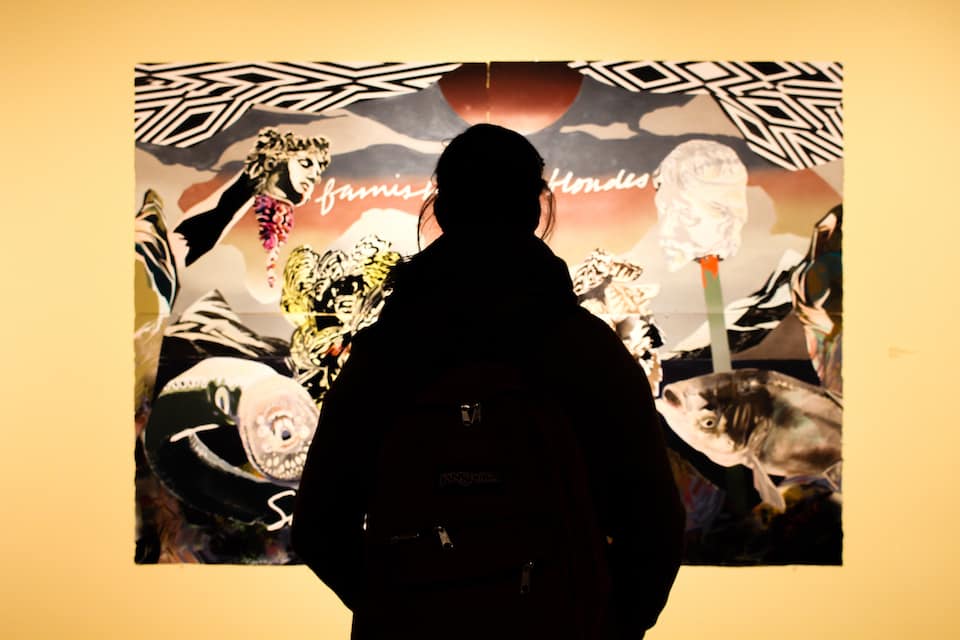[dropcap]T[/dropcap]he “feminized body” and “capitalist desire[s]” are two themes explored in the Doris McCarthy Gallery’s latest exhibit, Material Girls. Running from February 3 to April 9, the exhibit tackles new wave feminism as it pertains to the visual arts from varying cultural backgrounds.
Jennifer Matotek, director of the Dunlop Art Gallery in Regina, Saskatchewan, co-curated Material Girls with assistant curator Blair Fornwald and curator of education and community outreach Wendy Peart. The exhibition is a collaboration between the curators, with each of the three registering their own unique influences.
“As female co-curators ourselves, while we collectively agreed on who to include in the exhibition, we each see the works in the show from different perspectives, and all of the works speak to our perspectives,” Matotek says. “Blair’s interest is in the idea of excess, and feminine excess in particular; Wendy’s interest is in the tactile quality of the materials, and how they include consideration of the human body in various ways; and my interest is in how various works in the show utilize pattern and repetition from various cultural perspectives.”
Color — an operative medium throughout the exhibit — fills every blank space in the gallery. Most of the gallery is thematically pink. The exhibition itself utilizes a combination of different works and styles, from self-portraits, paintings, and photography, to various abstract structures.
“The ‘white cube’ look that galleries and museums have adopted is not neutral, and not particularly inviting,” says Matotek, explaining the excessive use of vibrant colour schemes. “It is our hope that through the design and layout of the exhibition, and our approach of turning the gallery into a kind of packed teenage girl bedroom, we can create a different kind of art-viewing experience.”
Material Girls provides viewers with humanistic commentary on a number of social justice issues. Sara Anne Johnson’s photographs were supposedly meant to portray female sexuality, but Matotek believes they’re intended to portray “sexuality in general.” The exhibit is impactful and thought provoking, and attempts to “write an essay about contemporary art history” that “presents many different ideas.”
“Alex Cu Ujeng’s wallpaper is a graphic (and I don’t mean explicit) representation of the female body, but in doing this, reminds us of something opposite — about how we are literally always surrounded by representations of phalluses in the forms of tall buildings although we never really think about it or talk about it,” says Matotek. “Allyson Mitchell’s work is a representation of the female body, using found craft likely fashioned during the period of first wave feminism. Moreshin Allahyari’s work looks at how the female body is viewed in a conservative Muslim world.”
Matotek conceptualized the exhibition’s premise on the notion of female artists increasing their presence in the world of visual arts. Material Girls builds upon the movement towards gender equality, especially in an industry which is often billed as male dominated.
“I think we are at a place where having an all-male show, or largely male show, is so common that to have an all-female exhibition somehow feels radical,” Matotek says. “I would like for us to be in a place where we can have an all-female show, and acknowledge that that’s what it is, or we can have an all-female show, and not acknowledge that that’s what it is.”


